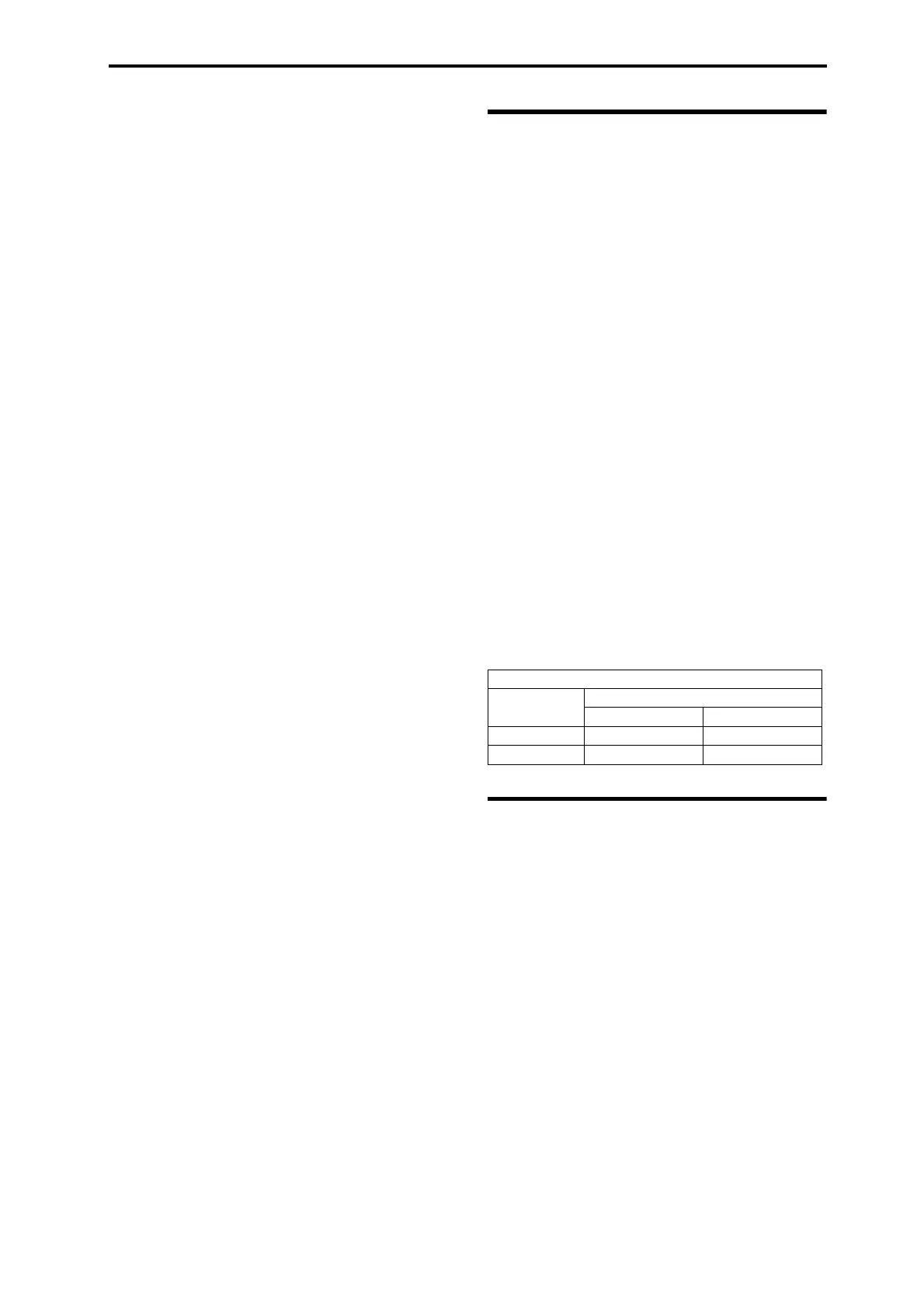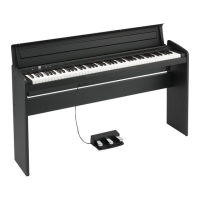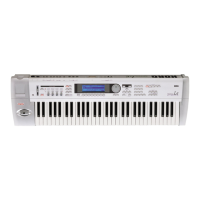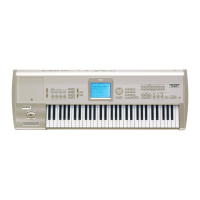WaveSeq Group Random Weighting Parameters
559
Keyboard Track (C2) [0, 1]
When 1: On, allows the specified 16 Waveform Choices to
track the keyboard (lowest note played, with reference to C2
- Note# 36). In other words, the 16 waveforms will be used
exactly as specified when the lowest input note played is a
C2. If the lowest note is higher or lower than C2, the number
of steps that it is higher/lower will be added to or
subtracted from each waveform, offsetting the entire group.
This provides a completely different resulting wave-
sequence depending on where the input notes are played.
Pattern Length [1…32]
Specifies the number of steps of the Waveform Pattern that
will be used during note generation. This allows you to loop
a smaller portion of the entire pattern. For example, if the
Waveform Pattern grid has been set up with a 20 step
pattern, and “Pattern Length” = 3, then only the first three
steps of the pattern will be used to generate notes. Those
three steps will loop continuously as the GE generates notes,
and the other steps will not be used. To use all steps of any
Waveform Pattern that is loaded, even when changing
Waveform Templates, set this to 32.
Random Weighting Parameters
The Random Weighting Parameters are made available
when at least one step (column) in the WaveSeq Pattern Grid
contains multiple values selected (constituting a “random
pool” of values). Whenever a random pool is encountered in
playing through the pattern, a random choice is made from
the values in that step. Certain areas of the random pool can
be favored by the use of a weighting table, with various
shaped curves. Using the curves, you can influence certain
choices to be made more or less often than others, allowing
very musical real-time control of the randomness.
Whether or not a certain random sequence will repeat for a
number of times is controlled by the Phase Group.
For more information, please see “Rhythm Group” on
page 539, and “Random Weighting Parameters - Pools” on
page 541.
Pools-Random Factor [–99…+99]
For more information, please see “Rhythm Group” on
page 539, and “Pools-Random Factor” on page 541.
Pools-Weighting Curve [0…3]
For more information, please see “Rhythm Group” on
page 539, “Pools-Weighting Curve” on page 541, and
“Random Weighting Curves” on page 584.
The following table summarizes the effect of the various
Weighting Curves and the Factor field on the choices from
the WeveSeq Pools:
Associated Parameters
Template Parameters
The two Template Parameters select from 63 or 64 different
WaveSeq Pattern Templates, and load the parameters into
the current Phase’s Pattern Grid and associated parameters.
A WaveSeq Pattern Template consists of:
• the configuration of the Pattern Editing Grid
• the sixteen “Waveform Choice” values, and the
corresponding “Start Offset” values.
• Random Weighting Parameters
Template [1…63]
For more information, please see “Rhythm Group” on
page 539, and “Template” on page 542.
Template + Restore [0: [As Stored]…63]
For more information, please see “Rhythm Group” on
page 539, and “Template + Restore” on page 542.
0: Off 1: On
0: Exponential 2: Exp-S
1: Logarithmic 3: Log-S
WaveSeq Pool values that receive priority:
Weighting
Curve
Factor
+ (positive) – (negative)
Exp/Log higher in grid lower in grid
Exp-S/Log-S middle higher/lower

